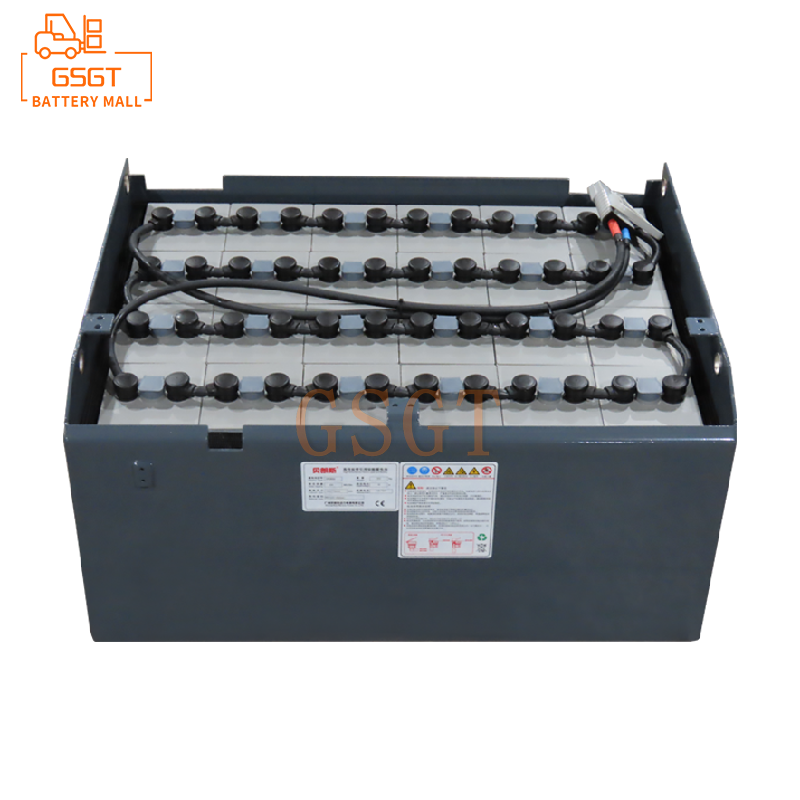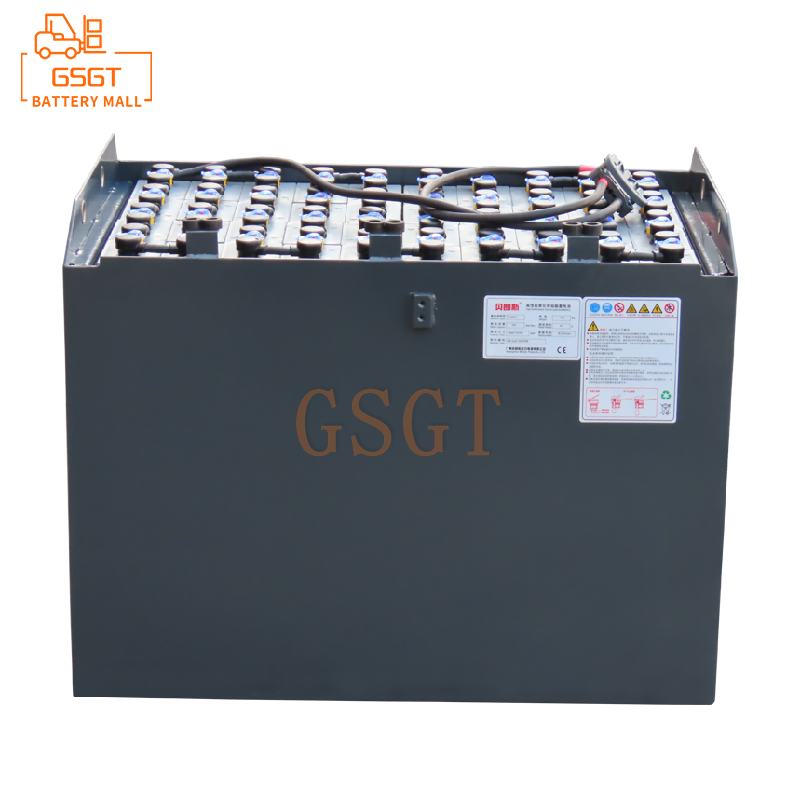Time:2025-07-28 11:01:34
Browse:617
In the fields of industrial production and logistics warehousing, forklifts, as efficient handling equipment, cannot operate stably without the continuous power supply of lead-acid batteries. Lead-acid batteries, as the power source for forklifts, not only have a relatively high procurement cost, but their service life also directly affects the working efficiency of forklifts and the operating costs of enterprises. Therefore, mastering scientific maintenance methods for lead-acid batteries is of vital importance for extending battery life and reducing enterprise costs. This article will provide a detailed introduction to the key points of maintaining lead-acid batteries for forklifts, helping enterprises better manage the power systems of their equipment.
1. Scientific maintenance during the charging process
Charging is an extremely crucial step in the operation of lead-acid batteries. Improper operation can significantly shorten the battery life. First of all, an original charger that matches the battery model should be used. Non-original chargers may have problems with voltage and current mismatch, which can easily lead to overcharging or undercharging of the battery.
In terms of charging time, strict control must be exercised. When the battery power is consumed to 20%-30%, it should be charged in time to avoid over-discharging and then recharging. At this time, the chemical reactions inside the battery are intense, which will accelerate the corrosion of the plates. After a full charge, charging should be stopped immediately. Overcharging will cause a large amount of gas to be generated inside the battery, leading to the loss of electrolyte, expansion and deformation of the plates, and seriously affecting the battery performance. Under normal circumstances, the normal charging time is about 8 to 10 hours. The specific time can be adjusted appropriately according to the battery capacity and discharge conditions.
The charging environment should not be ignored either. The charging area should be well-ventilated to facilitate the timely discharge of hydrogen and oxygen generated during battery charging and prevent safety accidents such as explosions. At the same time, the ambient temperature should be controlled at around 25℃. If the temperature is too high, the charging efficiency will decrease and the battery will heat up severely. If the temperature is too low, it will lead to insufficient charging and affect the battery capacity.
2. Daily Inspection and Maintenance
Daily inspection is an important means to detect battery problems in a timely manner and extend the service life. First of all, it is necessary to regularly inspect the appearance of the battery to see if there are any shell cracks, leakage or other conditions. If leakage is found, stop using it immediately, investigate the cause of the leakage and replace the damaged battery.
Secondly, check whether the terminals are loose or corroded. Loose terminals can lead to poor contact, generating sparks during charging and discharging, and damaging the terminals and battery plates. Corrosion will increase contact resistance and affect current conduction. Loose terminals should be tightened in time. For terminals showing signs of corrosion, they can be rinsed with hot water, dried with a dry cloth, and then protected by applying Vaseline.
In addition, pay attention to the liquid level and concentration of the electrolyte. During the use of lead-acid batteries, the electrolyte will decrease due to evaporation. When the liquid level is 10-15mm lower than the upper edge of the plates, distilled water should be replenished in time. Note that tap water or electrolyte should not be replenished. Tap water contains impurities that can contaminate the electrolyte and affect battery performance. Replenishing the electrolyte will cause the electrolyte concentration to be too high, accelerating the corrosion of the plates. The concentration of the electrolyte should be maintained at approximately 1.28g/cm³ (at 25℃), which can be measured by a hydrometer. If the concentration does not meet the requirements, adjustments should be made promptly.
3. Reasonable Control of the Discharge Process
The reasonable control of the discharge process also has a significant impact on battery life. During the operation of forklifts, it is necessary to avoid prolonged high-current discharge, such as frequent sudden acceleration and braking. These operations will cause severe impact on the internal plates of the battery, leading to the shedding of active materials and shortening the battery life.
At the same time, excessive discharge should be avoided. When the forklift's dashboard shows that the battery is low, it should be stopped from use immediately and charged as soon as possible. Generally speaking, the depth of battery discharge should not exceed 80%. Excessive discharge will cause sulfation of the plates, reducing the battery's capacity and lifespan.
After discharging, the battery should be charged as soon as possible, and it is best to complete the charging within 24 hours. Batteries that have been left uncharged for a long time will lose their activity due to sulfation of the plates and it will be difficult to restore their original capacity.
4. Battery Storage Management
Forklift batteries that have not been used for a long time should be stored correctly. First of all, before storage, make sure the battery is fully charged to ensure it is in a fully charged state and avoid storing it with a low battery. Undercharged storage can cause sulfation of the plates, reducing battery capacity and even making it impossible to restore.
The storage environment should be dry and well-ventilated, with the temperature controlled between 5 and 30 degrees Celsius. Direct sunlight and high-temperature and high-humidity environments should be avoided. During storage, the battery should be recharged once every 1 to 2 months to ensure it is fully charged and prevent sulfation of the plates.
5. Frequently Asked Questions
Is it a normal phenomenon that the lead-acid battery of a forklift gets very hot during charging?
Under normal circumstances, there will be a slight heat when the battery is charging, which is a normal chemical reaction phenomenon. However, if the heating is severe, such as when the temperature of the battery casing exceeds 45℃, it is an abnormal situation. Possible causes include charger failure and excessively high output voltage and current. Internal short circuit of the battery; Excessively high charging environment temperature, etc. At this point, charging should be stopped immediately and the charger should be checked to see if it is functioning properly. If the charger is fine, there might be an internal fault with the battery, and professional personnel should be contacted for maintenance.
Can tap water be added after the electrolyte level drops?
No. Tap water contains minerals such as calcium and magnesium as well as impurities. After being added to the electrolyte, these impurities will deposit on the battery plates, forming dirt that affects the chemical reactions on the plates and reduces the battery's capacity and lifespan. Therefore, when the electrolyte level drops, distilled water should be replenished to ensure the stable performance of the battery.
What are the differences in the maintenance of forklift batteries between winter and summer?
In winter, when the temperature is relatively low, the battery capacity will decrease. When charging, the charging time should be appropriately extended, but it should not exceed 1.5 times the normal charging time to avoid overcharging. At the same time, to keep the battery warm, the forklift can be parked indoors to avoid long-term storage in a low-temperature environment. In summer, when the temperature is relatively high, make sure there is good ventilation when charging to prevent the battery from overheating. In addition, the electrolyte evaporates relatively quickly in summer. It is necessary to frequently check the liquid level and replenish distilled water in a timely manner. During use, avoid over-discharging to reduce battery wear and tear.
Through the above scientific and reasonable maintenance methods, the service life of lead-acid batteries in forklifts can be effectively prolonged, the operational efficiency of forklifts can be improved, and operating costs can be saved for enterprises. Enterprises should attach great importance to the maintenance of batteries, formulate a complete maintenance system, regularly train operators, and ensure that maintenance measures are effectively implemented.

$1690

$2610

$1790

$4530

MESSAGE
Professional And Efficient
Security
Affordable Price
Professional Services